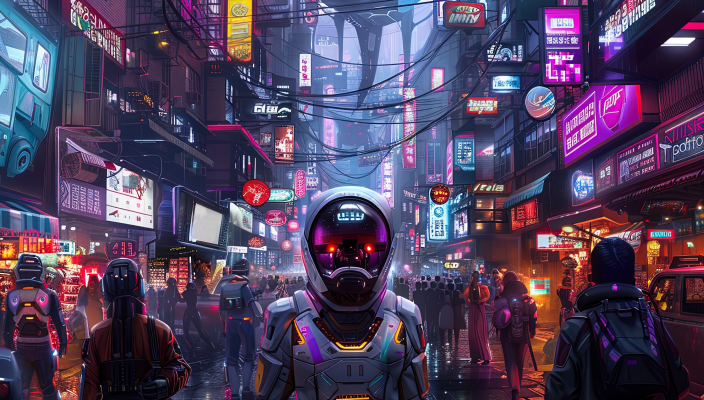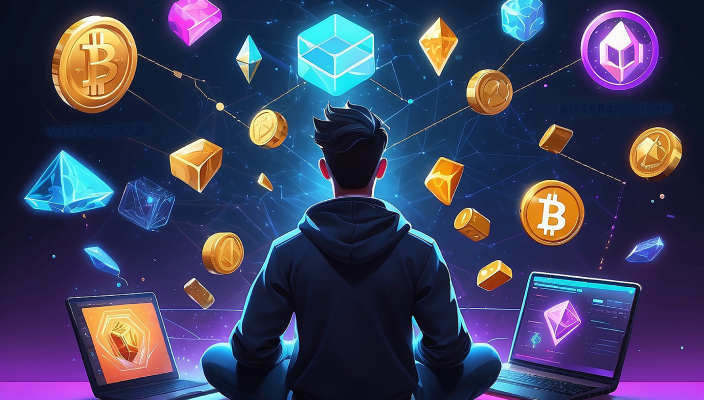NFTs (Non-Fungible Tokens) have taken the digital world by storm, offering a revolutionary way to own, trade, and create value with digital assets. As the NFT market matures, creating your own NFT marketplace can be a lucrative venture. In this guide, we’ll walk you through the essential steps to building an NFT marketplace in 2025. We’ll also explore the role of an NFT Marketplace Development Company and highlight services like Composable & Rental NFT Development that will shape the future of this industry.
What is NFT Marketplace Development?
NFT marketplace development refers to the process of building a digital platform that allows users to create, buy, sell, and trade NFTs. These platforms provide the infrastructure for artists, collectors, and businesses to tokenize digital assets such as art, music, virtual real estate, and more. The development of an NFT marketplace involves several technical and strategic decisions, from choosing the right blockchain to implementing essential features that enable secure transactions.
Current Market Stats of NFT Marketplace
As of 2025, the NFT market is experiencing unprecedented growth. According to recent reports, the global NFT market is expected to reach over $80 billion by 2028, with the gaming, art, and entertainment sectors leading the charge. In 2023, the trading volume on major NFT marketplaces like OpenSea and Rarible surpassed $30 billion, with millions of users actively engaging in NFT buying and selling. The rise of new trends like Composable NFTs—which enable the combination of different digital assets—and Rental NFTs, where users can lease NFTs for temporary use, are expected to drive further innovation and expansion.
Step-by-Step Guide to Develop an NFT Marketplace Platform in 2025
1. Choose the Right Blockchain
The first step in NFT marketplace development is choosing a blockchain that supports NFTs. While Ethereum remains the most popular blockchain for NFTs due to its well-established ecosystem and smart contract capabilities, other options like Solana, Binance Smart Chain, and Flow are becoming increasingly viable. Your choice of blockchain will impact factors like transaction speed, gas fees, and scalability.
2. Select the Type of Marketplace
You must decide whether you want to build a niche-specific NFT marketplace or a broad, all-encompassing platform. A niche marketplace allows you to target specific audiences, such as digital artists or gamers, while a broad platform could serve various sectors.
3. Smart Contract Development
Smart contracts are the backbone of any NFT marketplace, handling the creation, transfer, and sale of NFTs. You’ll need to develop robust, secure, and transparent smart contracts to ensure smooth transactions. Consider integrating Composable NFT Development Services, which allow users to combine assets like game characters or artworks into unique NFTs, adding more value and functionality to your marketplace.
4. Design the User Interface
User experience is crucial to the success of an NFT marketplace. The platform should have an intuitive, user-friendly interface that appeals to both buyers and sellers. Key features to include are:
- User profiles
- Search filters for easy navigation
- Auction and direct sale options
- Wallet integration (e.g., MetaMask, Coinbase)
5. Set Up Storage Solutions
For storing NFTs, decentralized storage solutions like IPFS (InterPlanetary File System) or Filecoin are widely recommended. These ensure that the NFTs’ digital assets are stored securely and can be accessed even if the marketplace experiences downtime.
6. Implement Security Protocols
Security is a top priority in NFT marketplace development. Use encryption technologies, multi-factor authentication, and regular audits to safeguard your platform against hacks and data breaches. Additionally, integrating Rental NFT Development Services could add more complexity to your platform, allowing users to rent out digital assets while ensuring the integrity of ownership.
7. Launch and Market Your NFT Marketplace
Once your marketplace is developed, it’s time to launch it. Effective marketing strategies—such as social media campaigns, partnerships with NFT influencers, and SEO optimization—can help attract users. Ensure that your platform can handle high traffic volumes as you grow.
How to Make Money from NFT Marketplace
An NFT marketplace can generate revenue in several ways:
- Transaction Fees: Charge a percentage for each sale that occurs on the platform.
- Listing Fees: Charge creators to list their NFTs.
- Minting Fees: Generate income by charging users for minting new NFTs.
- Subscription Models: Offer premium features to users through subscription plans.
Key Features to Implement in the NFT Marketplace
The key features of a successful NFT marketplace include:
- Smart Contracts: Ensure automated, transparent, and secure transactions without the need for intermediaries.
- Wallet Integration: Offer seamless connection to popular crypto wallets like MetaMask, allowing users to store and trade NFTs effortlessly.
- Search Filters: Provide advanced filtering options by categories, price range, and popularity to help users find specific NFTs easily.
- Auction Mechanism: Allow users to bid on NFTs with dynamic pricing based on demand, creating excitement and maximizing sales potential.
- NFT Minting: Enable users to create, tokenize, and sell their digital assets directly on the platform with minimal technical knowledge.
- User Profiles: Let users create personalized profiles where they can showcase their NFTs, recent transactions, and social links, fostering community interaction.
- Multi-currency Support: Facilitate transactions with different cryptocurrencies, offering flexibility and convenience to a broader audience.
- Royalties & Revenue Sharing: Automate royalty payments for creators, ensuring they receive a percentage of future sales of their NFTs.
- Escrow Services: Implement escrow mechanisms to hold funds during transactions, adding an extra layer of security for buyers and sellers.
- Cross-Chain Compatibility: Enable interoperability between different blockchain networks, allowing users to trade and transfer NFTs across platforms.
These features enhance user experience, security, and overall functionality, contributing to the success of an NFT marketplace.
Cost of Creating NFT Marketplace
The cost of creating an NFT marketplace varies based on several factors, including:
- Blockchain choice: Some blockchains have higher transaction fees.
- Feature complexity: Custom features like composable NFTs or rental services can increase development costs.
- Developer expertise: Hiring experienced NFT marketplace developers or an NFT Marketplace Development Company will influence the overall budget. On average, developing a standard NFT marketplace could range between $50,000 to $500,000, depending on the features and scalability.
Hiring Dedicated NFT Marketplace Developer vs. Outsourcing the Project
When developing an NFT marketplace, you can either hire dedicated developers or outsource the project to a development company.
Benefits of Hiring a Dedicated Developer:
- Full Control: You get complete control over the development process and can directly communicate with your team.
- Customization: A dedicated developer allows for more customization based on your exact specifications.
Benefits of Outsourcing the Project:
- Cost-Effective: Outsourcing is often more affordable, especially for small to mid-sized projects.
- Faster Development: Experienced teams can accelerate the development process, thanks to their expertise in NFT Marketplace Development Services.
- Access to Expertise: Outsourcing to an NFT Marketplace Development Company gives you access to a wide range of expertise, from blockchain integration to smart contract development.
Expertise of Webllisto in NFT Marketplace Development
Webllisto is a leading NFT Marketplace Development Company that specializes in crafting cutting-edge NFT platforms tailored to various industries. With a strong focus on innovation, Webllisto has experience in integrating advanced features like Composable & Rental NFT Development Services into NFT marketplaces. Our team of skilled developers is proficient in building user-friendly, secure, and scalable marketplaces on multiple blockchains, including Ethereum, Solana, and Binance Smart Chain.
We have successfully partnered with businesses to deliver high-performing NFT platforms, complete with advanced auction mechanisms, wallet integration, and custom smart contracts. With Webllisto, you can be assured of a seamless and efficient development process that aligns with your vision for the future of NFTs.
Conclusion
Building an NFT marketplace in 2025 offers immense opportunities for entrepreneurs and developers alike. By partnering with an experienced NFT Marketplace Development Company like Webllisto, you can create a platform that is not only functional but also future-proof. Whether you’re interested in Composable & Rental NFT Development Services or looking for a basic marketplace, following the steps outlined in this guide will set you on the path to success.
FAQs
- How long does it take to build an NFT marketplace with Webllisto?
The timeline for NFT marketplace development depends on the complexity of your requirements. A basic marketplace can take 3-6 months, while a more feature-rich platform with composable and rental NFT capabilities may take 6-12 months.
- Can I integrate custom features into my NFT marketplace?
Absolutely! At Webllisto, we specialize in integrating custom features like composable NFTs, rental services, and more to meet the unique needs of your platform.
- What blockchain should I choose for my NFT marketplace?
The choice of blockchain depends on your goals. Ethereum is great for its ecosystem, while Solana and Binance Smart Chain offer lower transaction fees and faster speeds. Our team can help you choose the best blockchain based on your specific needs.
- Do I need a native token for my NFT marketplace?
While a native token is not mandatory, it can enhance the marketplace’s ecosystem by offering utility and governance features. Our experts can help you decide if a native token is suitable for your platform and assist in its development.
- Can Webllisto help with NFT marketplace security?
Yes, security is one of our top priorities. We implement advanced security protocols like encryption, multi-factor authentication, and regular smart contract audits to ensure your marketplace is protected from potential threats.
- How can I monetize my NFT marketplace?
There are multiple ways to generate revenue from an NFT marketplace. These include transaction fees, listing fees, minting fees, and royalties. Our team can help you structure a monetization model that aligns with your business goals.
- Will my NFT marketplace support multiple file types for NFTs?
Yes, we design NFT marketplaces to support various file types, including images, videos, music, and 3D models. We ensure your platform can handle a wide range of digital assets to attract diverse creators and buyers.
- Does Webllisto offer post-launch support and maintenance?
Absolutely. Our services don’t end at launch. We offer comprehensive post-launch support, including updates, troubleshooting, and feature enhancements to ensure your marketplace continues to perform optimally.
- Can I scale my NFT marketplace as it grows?
Yes, scalability is a key aspect of our NFT marketplace development. We use modular and scalable architecture to ensure your platform can handle growing user traffic, more listings, and additional features as needed.
- How does Webllisto ensure a seamless user experience for the NFT marketplace?
We focus on intuitive UI/UX design to ensure a smooth user experience. From easy navigation to quick loading times and responsive design, our goal is to create a marketplace that’s user-friendly and engaging for buyers and sellers alike.
Also Read : Top blockchain platforms for nft marketplace development in 2024
https://webllisto.com/top-blockchain-platforms-for-nft-marketplace-development-in-2024/









































